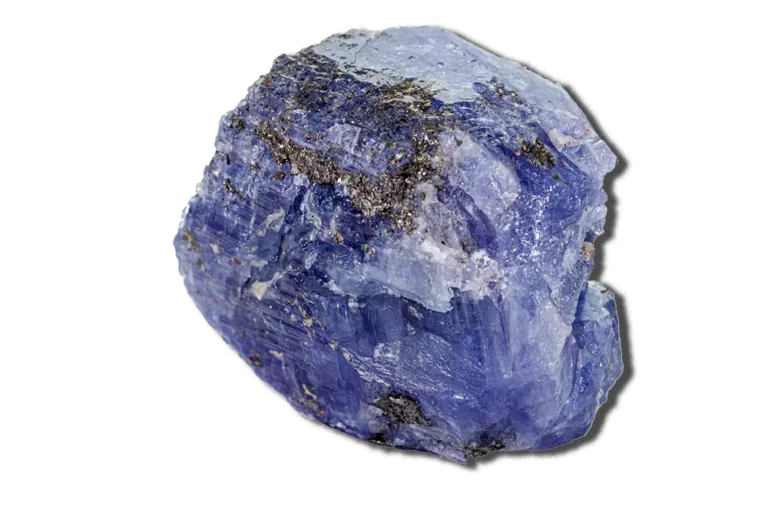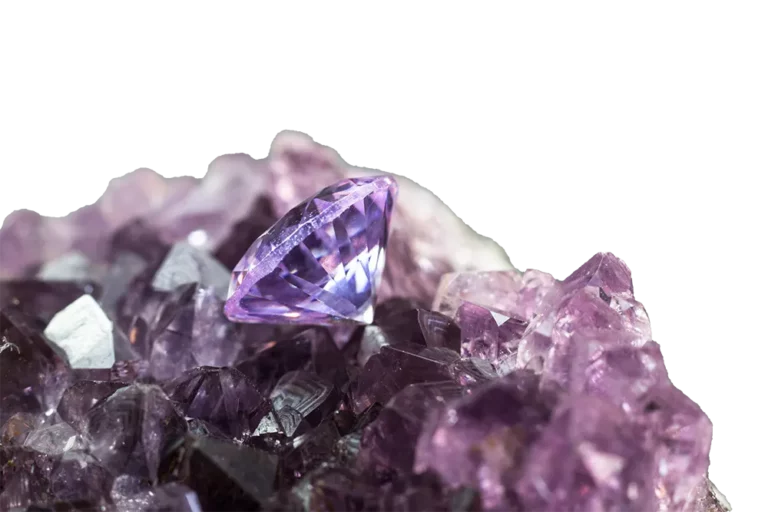The Black Orlov Diamond: A Journey Through History, Curse, and Fascination
The Black Orlov Diamond, also known as the “Eye of Brahma,” stands as a monumental testament to the enchanting allure and captivating mystery imbued within the world of gemstones. This tantalizing gemstone, rich with an exquisite black hue and deeply rooted in an intriguing history, commands the respect and fascination of gem aficionados across the globe.

This stunning diamond, unlike its traditional transparent counterparts, boasts an unparalleled black color. Weighing a staggering 67.5 carats, the Black Orlov commands a captivating presence that is hard to ignore. Its rare black color, combined with its heart-stopping size, distinguishes it as one of the world’s most famous diamonds.
However, the Black Orlov is not just a gemstone—it’s a vessel filled with stories of intrigue, mystery, and alleged curses. Its fascinating journey from a Hindu temple in India to present-day exhibitions in some of the world’s most renowned museums has left an indelible mark on the tapestry of gemstone history.
In the following sections, we will delve deeper into the fascinating history and journey of the Black Orlov Diamond. From its mythical curse to its intriguing journey across continents, this precious gemstone holds stories that continue to captivate audiences across generations. Strap in for an unforgettable journey into the heart of this one-of-a-kind diamond.
In This Article
The Origin and History of the Black Orlov
The Black Orlov Diamond’s history is as mysterious and captivating as its sparkling black surface. Born from the bosom of Mother Earth, the diamond’s journey is steeped in history, legend, and an inescapable aura of mystery.
The gemstone originally known as the Eye of Brahma Diamond was a whopping 195-carat diamond. Its history traces back to 19th-century India, where it was allegedly set as one of the eyes in the statue of the Hindu god Brahma in Pondicherry.
In a tale tinged with intrigue and desperation, the Eye of Brahma was stolen from the sacred statue. This event was the start of a series of unfortunate events that would later be attributed to the curse of the Black Orlov. In an atmosphere where faith and superstition were intertwined, the desecration of a revered deity was seen as a sacrilege leading to a curse.
The diamond’s trajectory took a sinister turn when it was brought from India to the United States. The tales of its curse began to circulate, and the diamond seemed to leave a trail of misfortune and tragedy behind it. These alleged effects of the curse on the diamond’s owners, a tale filled with intrigue and horror, transformed the Black Orlov from a precious gemstone into a symbol of deadly allure.
In the next section, we will explore the legend of the Black Orlov’s curse in more detail, unveiling the tragic stories associated with previous owners and the different opinions on the authenticity of the curse. Tune in as we unravel the mysteries, myths, and legends surrounding this ominous yet beautiful diamond.
The Curse of the Black Orlov: From Legend to Legacy

Cloaked in an enigmatic allure, the Black Orlov’s legacy is perpetually intertwined with an alleged curse that has been the source of chills, gasps, and a fair share of skepticism through the ages. The curse’s origin is rooted in the diamond’s alleged theft from the scared Hindu statue, an act of desecration many believe brought doom upon those in possession of the gemstone.
Inscribed in the annals of gemstone lore are the tragic stories associated with the Black Orlov. Two of the most chilling tales are those of the Russian princesses, Nadia Vyegin-Orlov and Leonila Galitsine-Bariatinsky. Both women were reported to have owned the diamond and leapt to their deaths in the 1940s. The pattern of suicides associated with the diamond’s owners propagated the belief in the diamond’s curse, sending shivers down the spines of potential buyers and the general public alike.
On the other side of the equation, there exists a pool of skeptics who dismiss the curse as nothing more than an intriguing tale spun to enhance the allure of the Black Orlov. They argue that the stories of tragedy and horror are mere coincidences, unrelated to the diamond itself.
Whether one chooses to believe in the curse or dismiss it as a fabrication, the undeniable fact remains: the legend of the Black Orlov’s curse has left an indelible mark on its legacy. The diamond has become much more than a precious gemstone; it’s a symbol of mystery, intrigue, and a chilling allure that continues to captivate audiences worldwide.
In the next section, we delve into the fascinating process that was believed to break the curse—the transformation of the Black Orlov. Stay with us as we continue to unravel the captivating tales surrounding this mesmerizing gem.
Breaking the Curse: The Transformation of the Black Orlov

In the face of tales of misfortune and despair, a daring decision was made to break the alleged curse of the Black Orlov. The diamond, once a massive 195-carat gem, was cut into three separate pieces— a courageous attempt to sever the chain of misfortune tied to the gem.
The largest piece, a stunning 67.5-carat black diamond, remained as the face of the Black Orlov. Its transformation was not just physical but symbolic too. The cutting of the diamond was seen as an act of defiance against its macabre history, a turning point breaking away from the shadow of the alleged curse.
The transformed Black Orlov was then set into an elegant diamond brooch surrounded by 108 colorless diamonds, and suspended from a necklace of 124 diamonds. This stunning masterpiece of jewellery artistry stands as a testament to the indomitable human spirit, which always seeks light even in the darkest of circumstances.
There are conflicting views on whether the curse has been truly broken. However, the transformation of the Black Orlov served as a turning point in its journey, marking the beginning of a new chapter in its story.
In the next section, we will follow the journey of the Black Orlov from India to the United States, documenting its various owners and exploring beliefs about whether the curse has truly been lifted. Stay tuned as we continue to delve deeper into the intriguing saga of the Black Orlov Diamond.
The Journey of the Black Orlov: From India to the United States
The journey of the Black Orlov Diamond is as enchanting as the gem itself, tracing a path filled with mystery, intrigue, and, to some, a touch of the supernatural. Sealing its place in the annals of gemstone lore, the Black Orlov has traversed continents and passed through numerous hands on its fascinating journey.
After its alleged theft from the Hindu temple in India, the diamond passed through various owners en route to its current location. Its journey was laden with tales of mishap and misfortune that only added to its mystique. Among its notable owners was the diamond dealer and collector Charles F. Winson, who owned the gem in the mid-20th century.
In 2004, the Black Orlov made headlines when it was bought by the renowned diamond dealer, Dennis Petimezas. Petimezas, reportedly aware of the diamond’s murky past and alleged curse, was unfazed. He was quoted saying, “I’ve got to tell you, after owning the gem for a while now, I’m still alive, and things have only gotten better.”
The purchase signaled a new era for the Black Orlov. Despite its dark past and the stories of the curse, the diamond continues to attract awe and admiration. Many believe that the curse was finally broken when the gem was cut into three pieces, but the debate continues.
Up next, we’ll explore the Black Orlov’s breathtaking display in prestigious museums and its unique characteristics that set it apart from other famous diamonds. Stay with us as we uncover more fascinating details about this legendary gemstone.
The Black Orlov on Display: A Diamond Attracting Worldwide Attention

The Black Orlov, with its exquisite uniqueness and intriguing history, has secured its place in the world’s most revered showcase spaces. Its display has garnered worldwide attention, fascinating patrons with its unparalleled beauty and legendary tales.
One such venue that had the honor of displaying the Black Orlov was the American Museum of Natural History in New York City. Nestled amongst other renowned gemstones and minerals, the Black Orlov held its own, drawing in crowds with its dark allure and captivating history.
Across the pond, the Black Orlov also found a temporary home in the Natural History Museum in London. Here, it continued to enchant visitors, serving as a tangible link to the fascinating tales of curses and its tumultuous journey from India to the United States.
The public’s fascination with the Black Orlov stems not only from its physical characteristics but also from its storied past. The diamond’s reputed curse and its association with the tragic fates of its previous owners have sparked intrigue and speculation, further amplifying its allure.
In the following section, we’ll dive deeper into the unique characteristics and value of the Black Orlov. From its rare black hue to its market value, there is much more to discover about this extraordinary diamond. Stay with us as we continue to celebrate the unique charm and enduring fascination that the Black Orlov commands.
The Black Orlov Diamond: Its Unique Characteristics and Value
The Black Orlov Diamond, beyond its historical significance and infamous reputation, is a gemological marvel. It embodies a unique set of physical attributes that set it apart and contribute to its enduring fascination.
The most striking feature of the Black Orlov is, of course, its color. Unlike the traditional colorless or subtly hued diamonds, the Black Orlov’s color is a rich, deep black. This extraordinary color is extremely rare in diamonds, making it a highly sought-after specimen for gem enthusiasts and collectors alike.
Weighing at a stunning 67.5 carats, the Black Orlov is a gem of significant size. Its impressive weight, coupled with its rare color, adds to its allure and value in the diamond market.
Apart from its individual characteristics, the Black Orlov is also notable for its setting. The diamond is set in a brooch encircled by 108 colorless diamonds and suspended from a necklace of 124 diamonds. This exquisite setting highlights the gem’s unique beauty, enhancing its overall appeal.
In terms of monetary value, the Black Orlov holds a substantial place in the market. Its unique characteristics coupled with its rich history contribute to its high worth. The diamond’s value is also expected to increase over the years, given its rarity and the growing interest in colored diamonds.
In the next section, we’ll delve into speculations about the future of the Black Orlov, including potential auctions and price predictions. Stay tuned for more intriguing insights about this exceptional gemstone.
The Future of the Black Orlov: Potential Auction and Price Speculations
As we gaze into the sparkling depths of the Black Orlov Diamond, one can’t help but wonder about its future. With its unique characteristics, rich history, and enduring worldwide fascination, the possibilities seem as multifaceted as the gem itself.
Historically, the Black Orlov has fetched substantial amounts at auctions. Its rarity, coupled with its intriguing backstory, makes it a coveted piece for collectors and investors alike. Every appearance of the Black Orlov on the auction block stirs up a wave of anticipation and speculation among gem enthusiasts and market watchers.
Looking ahead, experts predict that the Black Orlov could potentially command a price tag close to 1 million dollars. Given the increasing interest in colored diamonds and the unique allure of the Black Orlov’s story, these predictions do not seem far-fetched.
However, the world of gemstone auctioning is as unpredictable as it is exciting. The final price at an auction is often influenced by factors beyond the stone’s physical properties and historical value. Market trends, buyer preferences, and the atmosphere on the auction day itself can all contribute to the final hammer price.
In the next section, we’ll place the Black Orlov in context by comparing it with other famous diamonds. We’ll also explore stories and legends surrounding other cursed diamonds, further exploring the intriguing world of precious gemstones. Join us as we continue this captivating journey into the heart of the Black Orlov Diamond.
The Black Orlov in Context: Comparison With Other Famous Diamonds
The Black Orlov, while unique in its own right, shares the stage with other renowned diamonds in the world. By comparing the Black Orlov with these famous diamonds, we can better appreciate its unique characteristics and historical relevance.
One such gemstone is the Hope Diamond, a 45.52-carat blue diamond, known for its captivating beauty and infamous reputation for bringing misfortune to its owners. While comparisons can be drawn between the alleged curses of the Black Orlov and the Hope Diamond, the unique black color and larger weight of the Black Orlov set it apart.
Another notable gem is the famous Koh-i-Noor Diamond. Like the Black Orlov, the Koh-i-Noor has its origins in India and has been the center of ownership disputes and historical controversy. However, the Black Orlov’s journey from a Hindu temple to major American and British museums is a tale uniquely its own.
The Cullinan Diamond, the largest gem-quality diamond ever found, could be considered a peer in terms of size. Yet, the Black Orlov’s fascinating history and alleged curse add an element of intrigue the Cullinan Diamond lacks.
Finally, the Black Star of Africa, another famously large black diamond, could be seen as the Black Orlov’s most direct comparison. However, the history, the alleged curse, and the captivating journey of the Black Orlov place it in a category of its own.
In the following conclusion, we’ll recap the significance of the Black Orlov Diamond and reflect on the enduring fascination it continues to evoke. Keep reading as we wrap up this fascinating exploration of one of the world’s most unique and storied gemstones.
Conclusion: The Ongoing Mystique of the Black Orlov Diamond
As we conclude this mesmerizing journey into the heart of the Black Orlov Diamond, we are left with an enduring sense of fascination and intrigue. Far more than a gemstone, the Black Orlov is a compelling narrative etched in facets and carats—a testament to the power of history, legend, and the human imagination.
Its historical significance cannot be overstated. From its supposed theft from a Hindu statue in India to its transformation in an effort to break its alleged curse, the Black Orlov carries with it a rich tapestry of cultural and historical narratives.
The enduring fascination with the Black Orlov lies in its unique interplay of characteristics. Its rare black color and substantial size combined with its captivating journey and storied past continue to enchant gemologists, historians, and diamond enthusiasts around the world.
The alleged curse of the Black Orlov adds an additional layer of intrigue to its story. Whether one views the curse as fact or folklore, there’s no denying its influence on the diamond’s legacy.
In the grand scheme of gemstone lore, the Black Orlov stands as a testament to the power of stories. Its tale—one of beauty, history, and an alleged curse—continues to be told and retold, casting a beguiling spell that captivates the world.
As we gaze into the deep black depths of the Black Orlov Diamond, we’re not just looking at a gemstone. We’re peering into a millennia-old narrative, a captivating journey, and a saga of human fascination with beauty and mystery. The story of the Black Orlov, like its shimmering gleam, shows no sign of dimming. Its mystique promises to endure, as alluring and enigmatic as ever.
Frequently Asked Questions (FAQs)
What is the Black Orlov Diamond and why is it so famous?
The Black Orlov Diamond is renowned for its unique black color and equally captivating history. It is believed to be the 195-carat Eye of Brahma Diamond that was allegedly stolen from a Hindu statue in India and thus, cursed. It has been owned by various personalities and is now one of the world’s most famous diamonds.
What is the curse associated with the Black Orlov Diamond?
The curse of the Black Orlov Diamond is believed to have originated from its theft from a Hindu statue, which caused misfortunes to its owners. Notable instances include two Russian princesses who supposedly owned the diamond and later committed suicide. The authenticity of the curse, however, varies among different opinions.
How was the curse of the Black Orlov Diamond supposedly broken?
In an attempt to break the alleged curse, the diamond was cut into three pieces. The largest piece, a 67.5-carat black diamond, was set into a diamond brooch and necklace.
Who currently owns the Black Orlov Diamond and where has it been displayed?
The diamond was purchased by diamond dealer Dennis Petimezas in 2004. It has been displayed at two famous locations – the American Museum of Natural History in New York City and the Natural History Museum in London, attracting worldwide attention.
What is the estimated value of the Black Orlov Diamond and are there any future auctions expected?
Over the years, the value of the Black Orlov Diamond has substantially increased. Speculations suggest that it might be auctioned again in the future, potentially fetching a price tag of $1 million. However, concrete details about future auctions are yet to be released.







